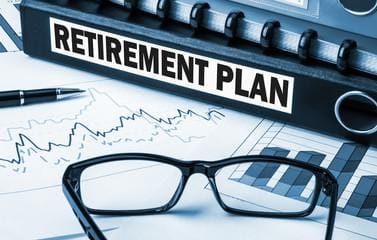Decoding Guaranteed Income Supplement (GIS) in Canada: A Guide for Low-Income

What is Guaranteed Income Supplement (GIS) Plan?
Retirement planning identifies retirement income objectives as well as the actions and decisions required to meet those objectives. Identifying sources of income, estimating expenses, putting in place a savings plan, and managing assets and risk are all part of retirement planning.
To determine whether the retirement income objective will be met, future cash flows are projected. Some retirement plans differ depending on whether you live in the United States or Canada, which has its own system of employer-sponsored retirement plans. Retirement planning should ideally be a life-long effort. You can begin at any moment, but it is most effective if you incorporate it into your financial planning from the start. That is the most effective strategy to ensure a safe, secure, and enjoyable retirement. The fun aspect is why it’s important to pay attention to the serious (and maybe boring) phase of the process: figuring out how you’ll get there.
Do you want to know about Guaranteed Income Supplement (GIS) retirement plan? If yes, then you have arrived at the right place. Have a look below:
The Guaranteed Income Supplement (GIS) is a non-taxable monthly benefit for low-income seniors. In most situations, you’ll receive a letter from Service Canada the month following you turn 64 informing you that you’ve been enrolled. You’ll have to apply if you don’t receive the letter. Single, widowed, or divorced seniors might receive up to $919.12 per month in 2021. As you make more money, this amount decreases until it disappears after your income hits $18,648. If you have a spouse or common-law partner, you may be eligible for additional GIS supplements.
What these benefits offer
The Guaranteed Income Supplement (GIS) is a monthly payment you can get if you meet the following criteria:
- you are 65 years old or older
- you are a Canadian citizen
- you’re eligible for an Old Age Security (OAS) pension
- If you are single, widower, or divorced, your annual income is less than $19,464
- your income + your spouse’s/common-law partner’s income is below:
- $25,728 if your spouse/common-law partner receives the full OAS pension
- $46,656 if your spouse/common-law partner does not receive an OAS pension
- $46,656 if your spouse/common-law partner receives the Allowance
Low-income Old Age Security retirees are eligible for the Supplement, which is based on income. It is not subject to taxation.
Benefit for your spouse or common-law partner.
Allowance:
Your spouse or common-law partner may be eligible for the Allowance benefit if you are eligible for the Guaranteed Income Supplement and your spouse or common-law partner:
- is 60 to 64 years of age
- is a Canadian citizen or a legal resident
- resides in Canada and has done so for at least 10 years since becoming 18 years old.
- You make less than $36,048 per year as a couple (January to March 2022 maximum annual income threshold)
Allowance for the Survivor:
If you meet the following criteria, you may be eligible for the Survivor’s Allowance:
- you are between the ages of 60 and 64
- you have not remarried or engaged into a common-law relationship after your husband or common-law partner died.
- You make less than $26,256 per year (January to March 2022 maximum annual income threshold)
Stages of Retirement Planning
The following are some tips for successful retirement planning at various phases of life.
Young Adulthood (Ages 21–35)
Those just starting out in adulthood may not have a lot of money to invest, but they do have time to let their investments mature, which is an important part of retirement planning. This is due to the principle of compound interest.
Compound interest means that interest earns interest, and the longer you have, the more interest you’ll earn. Because of compounding, even if you can just put aside $50 each month, it will be worth three times more if you start investing at age 25 than if you wait until age 45. You may be able to invest more money in the future, but you can never make up for lost time.
Early Midlife (Ages 36–50)
Mortgages, student debts, insurance premiums, and credit card debt are all common financial stresses in early middle age. At this stage of retirement planning, though, it’s vital to keep saving. These are some of the finest years for aggressive saving since you can earn more money while still having time to invest and earn interest.
Later Midlife (Ages 50–65)
Your investing accounts should grow more conservative as you get older. While time is running out to save for folks who are nearing retirement, there are a few advantages. Higher salary, as well as the possibility of having some of the aforementioned expenses (mortgages, school loans, credit card debt, and so on) paid off by this time, can provide you more money to invest.
It’s also never too late to open and fund a 401(k) or an IRA. Catch-up contributions are one of the advantages of this stage of retirement preparation. In 2021 and 2022, you can contribute an additional $1,000 per year to your regular or Roth IRA and $6,500 per year to your 401(k) starting at age 50.
Are you interested in learning how to get started investing in real estate with as little as $2500? Then, you must contact us as soon as possible.
Related Articles to Guaranteed Income Supplement (GIS) Plan:
- Grow Your Wealth While Managing The Risks With Diversification
- Investment and Wealth Basics: Real Estate edition
- How to Invest in Real Estate Without Fear of Rejection
- Artificial Intelligence making Real Estate Investment smarter, simpler.
- Millennials struggle to chase Real Estate dreams using traditional investment options